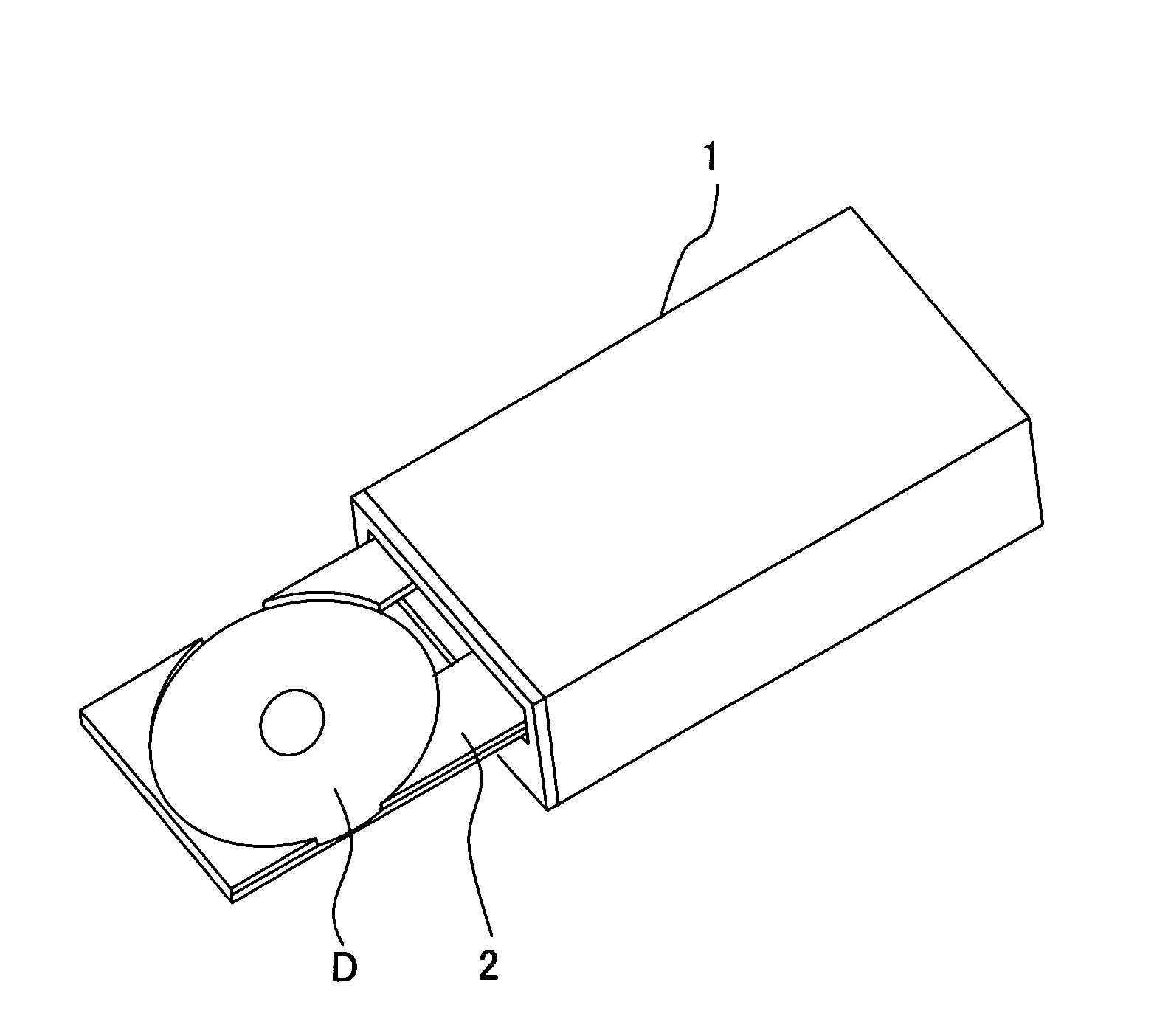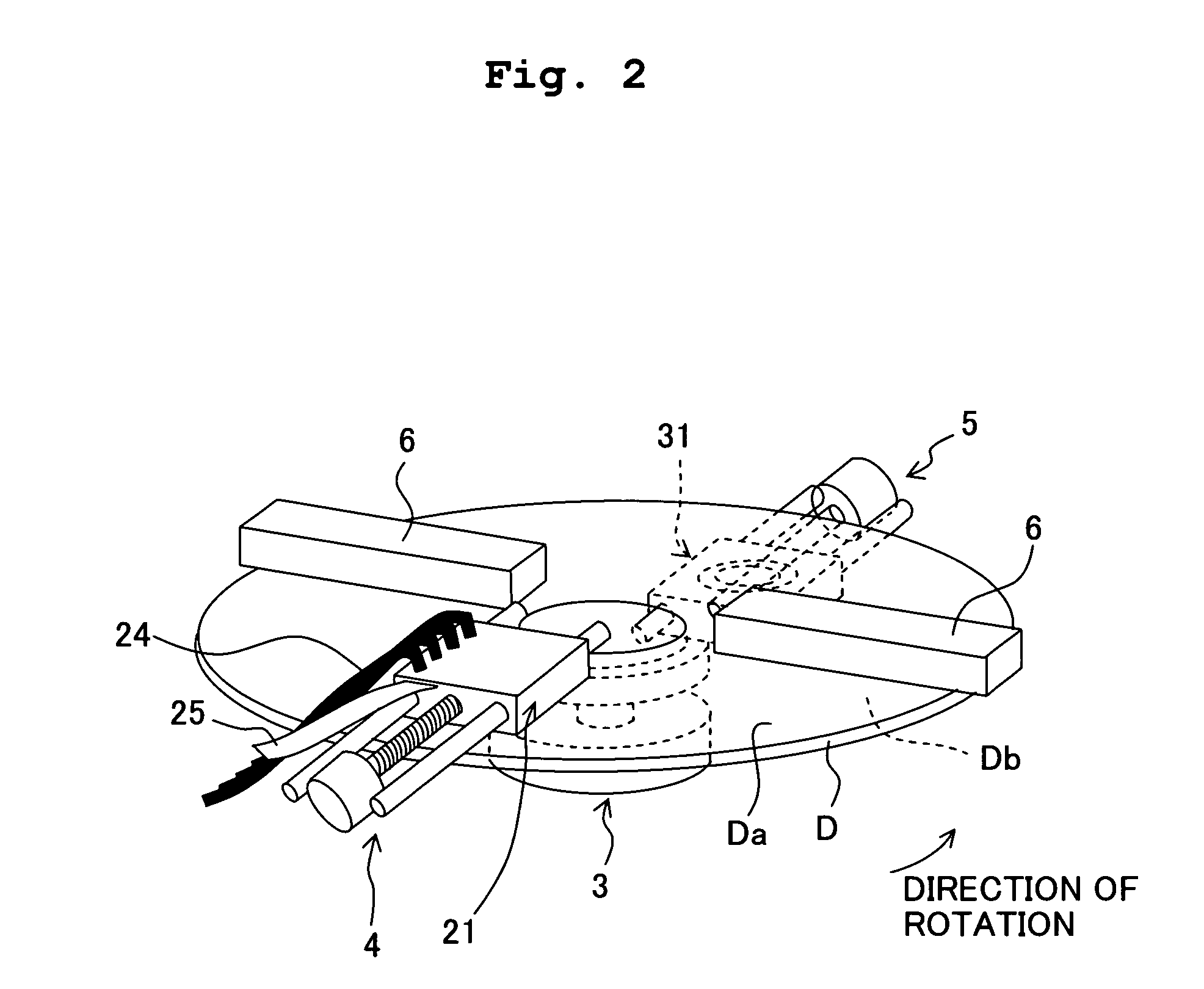Recording apparatus and recording method
a recording apparatus and recording method technology, applied in the field of recording apparatus and recording method, can solve the problems of large amount of time required for recording images, small number of disks may be processed, and it may take a long time for ink to naturally dry, so as to reduce the speed of airflow and speed of airflow. the effect of the viscosity of the air flowing into between the shielding member and the image recording surfa
- Summary
- Abstract
- Description
- Claims
- Application Information
AI Technical Summary
Benefits of technology
Problems solved by technology
Method used
Image
Examples
first embodiment
[0051]FIG. 1 is an external perspective view of a disk drive 1 (recording apparatus) according to the present embodiment. As shown in FIG. 1, the chassis of the disk drive 1 is so-called half-height size, and is the same as the chassis used an ordinary CD-ROM or CD-R / RW drive. An optical disk D as a recording medium is, for example, a CD-R, CD-RW, or the like, and has the shape of a circular plate. One of the surfaces of the optical disk D is a flat image recording surface Da (see FIG. 2) for recording an image or the like, and the other surface thereof is a flat data recording surface Db (see FIG. 2) for recording data. The disk drive 1 is a recording apparatus for recording an image on the image recording surface Da of the optical disk D and recording data on the data recording surface Db. As shown in FIG. 1, the disk drive 1 is provided with a loading tray 2 for inserting the optical disk D into the disk drive 1 or taking the optical disk D out of the disk drive 1. The optical di...
second embodiment
[0083] The second embodiment is described next. The second embodiment is different from the first embodiment in that the operation mode is not switched to the drying mode to dry the ink after recording an image on the image recording surface of the optical disk in the image recording mode.
[0084]FIG. 9 is a flowchart showing a process of the disk drive 1 when recording data and recording an image in the present embodiment. In the present embodiment, as in the case of the first embodiment, when the recording data to be recorded on the data recording surface Db of the optical disk D is input from the PC 100 to the disk drive 1, the mode switching portion 41 switches the operation mode of the disk drive 1 to the data recording mode (S200), and prepares for data recording. It should be noted that when there exists image data to be recorded on the image recording surface Da of the optical disk D in this step, this image data is also input to the disk drive 1 along with the recorded data....
modified examples
[0094] Next, modified examples in which various modifications are applied to the first and second embodiments are described. It should be noted that same reference numerals are used to indicate the portions or parts having the same configurations as these of the first and second embodiments, thus the explanations for these portions or parts are omitted as appropriate.
[0095] As shown in FIG. 10, a shielding member 71 may be inclined to a direction perpendicular to the direction of rotation of the optical disk D as viewed from direction perpendicular to the image recording surface of the optical disk (modified example 1). Specifically, the shielding member 71 may be inclined with respect to the radial direction of the optical disk D, such that an outer end portion of the shielding member 71 advances in the direction of rotation of the optical disk D. In this case, as shown in FIG. 10, some of the airflow W generated by rotating the optical disk D (airflow Wc) flows in a direction tow...
PUM
| Property | Measurement | Unit |
|---|---|---|
| rotation angle | aaaaa | aaaaa |
| Da | aaaaa | aaaaa |
| rotation speed | aaaaa | aaaaa |
Abstract
Description
Claims
Application Information
 Login to View More
Login to View More - R&D
- Intellectual Property
- Life Sciences
- Materials
- Tech Scout
- Unparalleled Data Quality
- Higher Quality Content
- 60% Fewer Hallucinations
Browse by: Latest US Patents, China's latest patents, Technical Efficacy Thesaurus, Application Domain, Technology Topic, Popular Technical Reports.
© 2025 PatSnap. All rights reserved.Legal|Privacy policy|Modern Slavery Act Transparency Statement|Sitemap|About US| Contact US: help@patsnap.com



